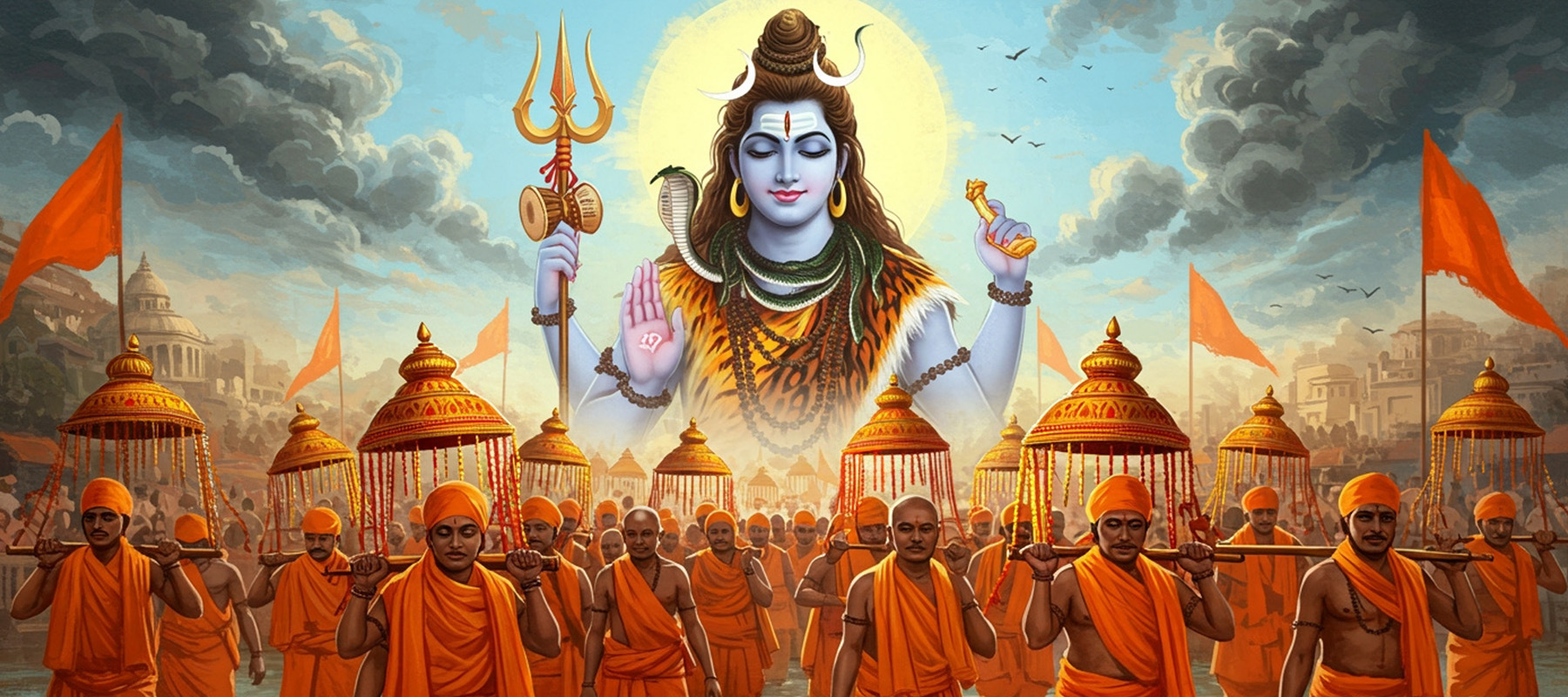Sawan, also known as Shravan, is one of the holiest months in the Hindu lunar calendar, celebrated with profound faith and nationwide enthusiasm. What makes Sawan especially distinctive is how it weaves spiritual, cultural, and natural cycles into the everyday life of millions of devotees across the region.
Significance:
Sawan’s deep spiritual meaning comes from its connection to Lord Shiva, regarded as the supreme force of transformation. It is believed that during this month, Shiva drank the deadly poison ‘Halahala’ produced during the cosmic churning (Samudra Manthan) to save the universe, turning his throat blue and earning the name Neelkantha. The legend imbues Sawan with themes of sacrifice, healing, and renewal. In many traditions, it’s also considered the period when Shiva and Parvati were united in marriage, symbolizing love and devotion.
Auspicious Date:
Sawan’s timing shifts each year because Hindu religious months follow lunar cycles. In 2025, North India (using the Purnimanta lunar calendar) observes Sawan from July 11 to August 9. South and Western India (using the Amanta lunar calendar) see Sawan from July 25 to August 22. Meanwhile, Nepal and some Himalayan regions align Sawan from July 16 to August 15 using a solar-based tradition. This calendar split means key observances and festivals often fall on different dates depending on the region, an example of India’s remarkable diversity.
Rituals:
During Sawan, especially on Mondays, known as Sawan Somwar, devotees visit Shiva temples, offer milk and special leaves called bael, and recite prayers. Many people fast or make personal vows, seeking blessings for health, happiness, and good fortune. Women pray for their families and loved ones, and some young people hope to find good partners during this time.
Abhishekam is the ritual bathing of the Shiva Lingam using water, milk, honey, curd, ghee, and other sacred substances (panchamrit). These offerings are meant to soothe and honor Shiva.
Devotees recite Shiva mantras, bhajans, aarti, and readings from the Shiva Purana, with many homes and temples echoing devotional sounds throughout the month.
Unique Customs Across Different Regions:
North India is known for the vibrant Kanwar Yatra, where millions of ‘Kanwariyas’ undertake pilgrimages, collecting holy Ganges water to offer at local Shiva temples, sometimes walking barefoot across vast distances.
South and Western India follow a different lunar calendar, so Sawan overlaps with local festivals and may even coincide with the previous month (Ashada Masam) for the first two weeks, before aligning in the latter half of the season. Rituals are generally similar, focusing on temple visits, fasting, and special prayers.
Notable festivals during Sawan include Nag Panchami (worship of snake deities for protection), Hariyali Teej (celebrated by women for marital harmony and the rains), and Raksha Bandhan (symbolizing sibling bonds). Sawan is also regarded as a spiritually significant time for starting new ventures and personal transformation, believed to purify the mind and body while enhancing inner peace and discipline.
Sawan isn’t just about rituals; it’s about connecting with nature and taking some time for self-reflection. The peaceful rain, the sounds of devotional songs, and the gatherings at temples all make this month feel magical. For travelers in India, experiencing Sawan means witnessing a beautiful blend of culture, devotion, and nature at its most vibrant.


